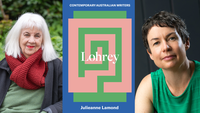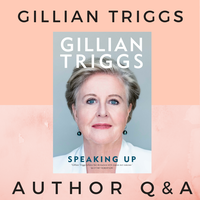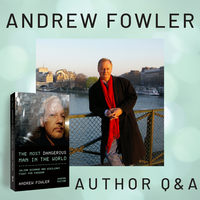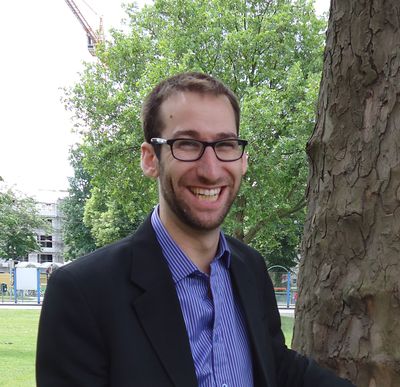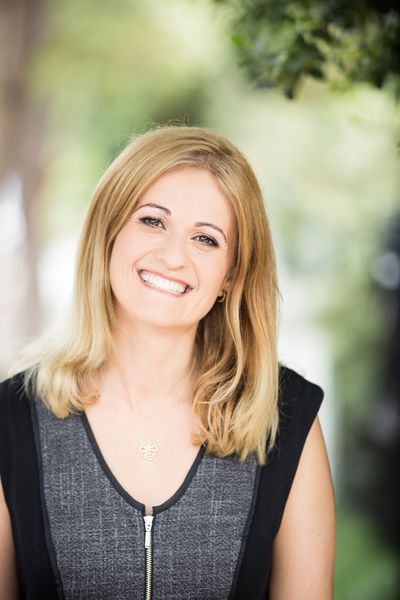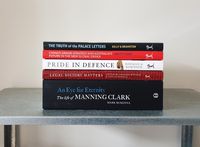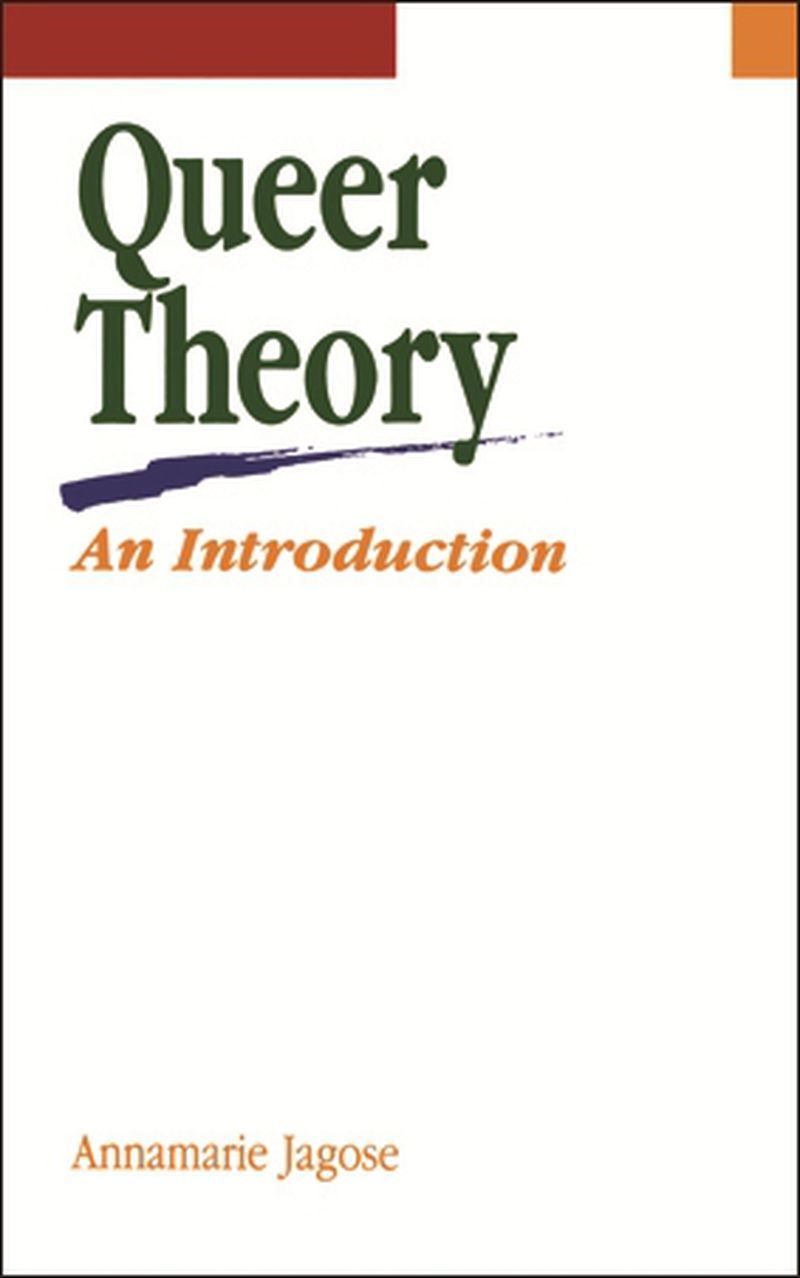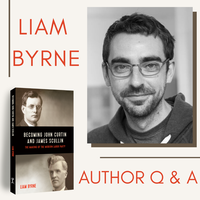Q & A with Noah Riseman and Shirleene Robinson - Authors of Pride in Defence
'LGBTI people have always been ready to defend Australia, even when the military and government did not want them. Their service has come at great personal, professional and financial cost, and the country owes a debt to those people whose service was never properly recognised'
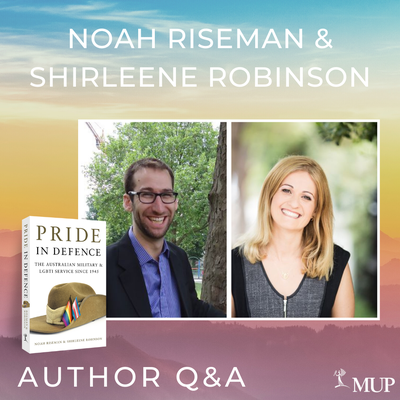
Since the Second World War the Australian military has undergone remarkable transformations in the way it has treated lesbian, gay, bisexual, transgender and intersex service members: it has shifted from persecuting, hunting and discharging LGBTI members to embracing them as valued members who enhance the Force's capabilities. Pride in Defence is a depiction of the diverse ways LGBTI members of the Australian Defence Force have navigated life in this challenging social environment.
Noah Riseman is Professor of History at Australian Catholic University, where he specialises in Australian histories of sexuality, gender and race.
Shirleene Robinson is Senior Curator of Oral History and Indigenous Programs at the National Library of Australia and Honorary Associate Professor of Modern History at Macquarie University.
Describe your new book in three words.
NR: Groundbreaking, comprehensive, thorough.
SR: Innovative, moving, comprehensive.
What inspired you to write Pride in Defence?
NR: My previous research and writing had been on the history of Indigenous people in the Australian Defence Force. Back in 2012 I interviewed a gay Aboriginal man who had served in the ADF. At the time he would only tell me off the record what it was like being gay. Around the same time as that interview, there was a small article in the LGBTI press about the 20th anniversary of the Australian government lifting the ban on LGB service. I realised that while most people have heard about America’s ‘don’t ask, don’t tell’ policy, there had been almost no research into Australia’s experience. I then approached Shirleene and others about this project, and it took off from there. Pride in Defence is the culmination of about five years of research.
SR: LGBTIQ people have served in the Australian military for as long as there has been an Australian military. Yet, this history is not very well known. Many Australians assume that lesbian, gay and bisexual Australians joined up after 1992, when the ban on LGB service was lifted. They also assume that transgender personnel joined after 2010, when the ban on transgender service was lifted. Yet the historical contribution is so much deeper and more extensive than that. This was an important opportunity for Noah and I to tell that history.
What has been the highlight for you in the writing process?
NR: We met so many amazing people for this project. Some had very positive experiences serving in the ADF, while others had left under horrible circumstances. Of course, there were also the humorous stories which we incorporated into the book (my favourite is on pp. 84-85 – buy the book to find out). Meeting all of these amazing people has been eye-opening about how LGBTI people have navigated life in the ADF and pushed to make the organisation stronger and more inclusive.
SR: Without a doubt, the process of conducting oral history interviews was the highlight for this book. We travelled widely and we met extraordinary people that I would not have otherwise met. In the aftermath of the book being published, we have received praise from people who served and that is the highest praise we could get.
Tell us about your writing routine. Where do you like to write? When and how often?
NR: We finished the manuscript for Pride in Defence just before Covid, so I wrote most of it from my office. The editing, however, took place from the comfort of my sofa (which serves as my home office).
It takes me quite a bit of effort to get ‘in the zone’, but once I’m there my writing is a bit like verbal diarrhoea. For a project like this, the writing was actually the easy bit; the hard work was the research which took years of oral history interviews and archival research. The challenge was meticulously organising this material through spreadsheets, thematic folders, sub-folders, and the deep recesses of my memory bank. When writing a chapter, I would first do the introduction then put in the subheadings, main ideas and/or examples I knew I wanted to cover, and any quotes from documents that stood out. Then it was a matter of filling in the blanks in a coherent, readable manner.
One of the perks of co-authoring is someone else reads it over and can tell you if you are making sense!
SR: We did most of the intensive writing for this book over the Christmas and new year break. We had no idea that COVID-19 was around the corner! I was in Canberra when we were writing, so there were bushfires not too far away and smoke that reached the city of Canberra at times when my writing was happening. I have a study nook, so that was where I did most of my work, with lots of paper and piles of material in a small space. I don’t think I have a particular time of day that I prefer to write best – instead it is about seizing the time that is available and trying to make the most of it. If that time is later in the day or evening, there is always coffee! Although Noah is in a different city, we were able to communicate and exchange drafts very easily over the internet and we worked well together. It was an enjoyable process and I am proud of the book.
What are you currently reading?
NR: I went on a massive reading spree this year due to Covid, iso and lockdowns. I actually set aside at least an hour (usually more) at the end of each work day just for reading. So 2020 was my opportunity finally to get through the massive pile that I had in my office and at home which were the ‘one day I’ll read this’ books.
At the moment, I am reading Uruguayan author Mario Benedetti’s short story collection La Muerte y Otras Sorpresas (Death and Other Surprises). It was assigned reading in my final university Spanish class 17 years ago, but I never properly got through the text. Better late than never.
SR: I have about four different books piled up next to my bed. All Our Shimmering Skies by Trent Dalton is my current fiction book though. I loved his previous novel, Boy Swallows Universe. I am also reading Marshall Sahlins’s Islands of History which is an interesting read for me because it considers contact history between Fijians and Europeans in the nineteenth century (alongside other Pacific nations) and this is a part of my heritage I am enjoying reading more about.
What is in your to-be-read pile?
NR: I lost count of how many books I read this year, and only two books remain in my pile: Thomas Picketty’s Capital in the Twenty-First Century and The Book of Mormon. Why The Book of Mormon? Years ago I read the Bible because I thought it would be good to understand these texts that have been spouted and referenced constantly. Sometime circa 2002 I saw a copy of The Book of Mormon in an op-shop for $1, so I bought it and it has long sat in my ‘one day I will read this’ pile. Having ploughed through everything else this year, I am just about out of procrastination options. In fact, earlier this year in my iso-reading I read a copy of the Holy Qu’ran translated into Spanish. I am not a religious person, but I do see value in learning about other faiths.
SR: I have lots of books ready to go. These include a good mix of some old and some newer. Older books include Mikhail Bulgakov’s The Master and Margarita and Andy Warhol’s The Philosophy of Andy Warhol. Newer releases include Tomasz Jedrowski’s Swimming in the Dark and Douglas Stuart’s Shuggie Bain.
What message do you want to leave with readers of your book?
NR: LGBTI people have always been ready to defend Australia, even when the military and government did not want them. Their service has come at great personal, professional and financial cost, and the country owes a debt to those people whose service was never properly recognised. The ADF has changed remarkably over the last 70 years, but we cannot take those changes for granted. We must learn from the ADF’s past to make it a stronger organisation in the present and into future.
SR: I would like people to know that change is possible, even amongst the most conservative of institutions. But that this change doesn’t happen without the careful and determined efforts of courageous people. There is still a distance to go with some issues that impact on LGBTIQ people in the Australian military. But I hope people can be left with a message of hope and an understanding of the important contribution that LGBTIQ people have made to the Australian military over many, many decades, in an astounding array of fields.
